Page 20 of 25
Re: PhilBWright
Posted: Mon May 03, 2021 6:11 am
by PhilBJohnson
Garlic Mustard, Primary Seedpod food source, for an Orange-tip larva.
Seasonally, it was thought, in Lincolnshire, 2021 was behind 2020 by a week or two. I was delighted that the Garlic Mustard was now flowering, but plants and flowers were smaller than usual, following an April of below average rainfall. This plant naturalised, often on "green" banks, falling towards a water course, where it's "tap root" (single root extended, tapping into damp soil, or water table).
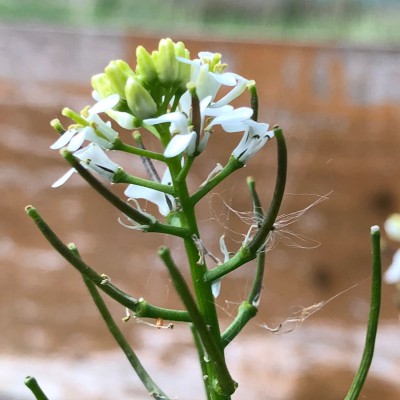
- May 1st 2020. As flower grew taller, seedpods and egg, developed under flower.
In Lincolnshire 2021, some plants had not many seedpods developed yet. If not already, the next two to three weeks was thought to be the main time for an Orange-tip to lay her eggs. If you have Garlic Mustard in your garden and wanted to encourage ovipositing behaviour, keep your plants watered, if it was not going to rain (like it might this afternoon).
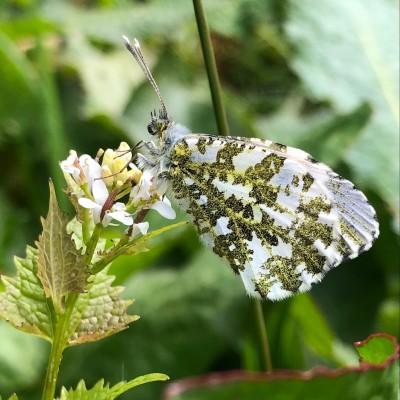
- May 2nd 2021 Female Orange-tip at Camouflaged Rest on favourite flower head, during a period of direct sunlight lost (cloudy). Not many seedpods developing under flower, yet.
Re: PhilBWright
Posted: Tue Jun 01, 2021 5:48 am
by PhilBJohnson
May 31st 2021
This was where my Wife and i were yesterday:
"for the love of butterflies"
https://youtu.be/n2Tw-DnjLPU
Youtube Video, just over 2 minutes long. All my youtube videos are for kids.
Ashing Lane Nature Reserve, Dunholme, Lincolnshire,
owned by Nettleham Woodland Trust.
Re: PhilBWright
Posted: Thu Jun 03, 2021 3:08 pm
by David M
Lovely video again, Phil.

The Green Veined White pair was my favourite part - the poor female was suspended in mid air at one point, although at least the male was kind enough to carry her whilst in flight.
Loved the Peacock on Melissa's cap at the end.

Re: PhilBWright
Posted: Sun Jun 06, 2021 9:51 pm
by PhilBJohnson
June 6th 2021
This was a “permissive footpath” (with land owners permission), not “a public right of way”
I thought that the land owner needed to be congratulated for providing a local community with a pleasant exercise walk, as well as a habitat & habitat corridor for wildlife.
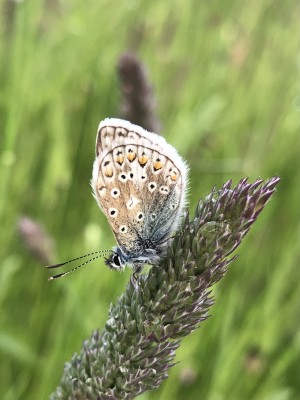
- “Trefoil Blue”
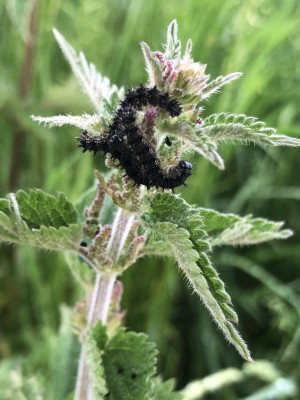
- Peacock Butterfly Caterpillars
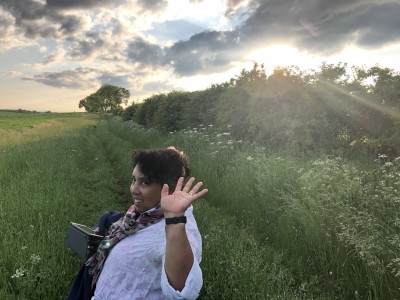
- Wide Field Margin Habitat & Habitat Coridor
It was nice to see or think that crop yields did not have to be the only driving force for Community well-being and legislative changes. This was thought to be a link to the land owners website:
https://dysonfarming.com/
Kind Regards
Re: PhilBWright
Posted: Sat Jun 12, 2021 5:14 am
by PhilBJohnson
June to April gap.
This female Orange-tip (OT) butterfly was seen on June 8th 2021, near Lincoln on Sweet Rocket.
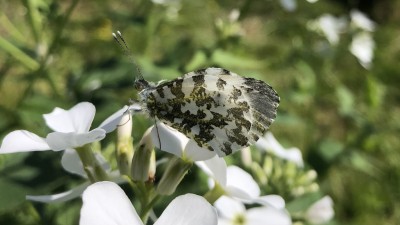
- "Last Orange-tip butterfly?"
She was shortly afterwards joined by a male and they “danced” off over the allotment fence. As I watched them go, I felt like I might not see another OT butterfly this year.
There was something intrinsically beautiful about this species, that linked it, essentially with May, in the psyche of many people’s Spring, United Kingdom Countryside experience.
Like many butterfly enthusiasts, I don’t want that experience to be lost, for a younger generation.
Re: PhilBWright
Posted: Tue Jun 15, 2021 4:45 am
by PhilBJohnson
This short video was called:
"Butterfly Whispering"
and featured my Wife with a Red Admiral butterfly, filmed near the beginning of June this year (2021).
The butterfly was thought to have been a territorial male and had migrated from the south, to get to Lincoln:
https://youtu.be/c1tWbUvMKYM
Kind Regards
Re: PhilBWright
Posted: Thu Jun 17, 2021 10:09 am
by David M
Love the slow motion sequences, Phil. Like Emperors, Admirals do seem drawn towards human beings, even if they don't often decide to actually settle upon us.
Re: PhilBWright
Posted: Thu Jun 24, 2021 3:38 pm
by PhilBJohnson
Orange-tip butterfly, from caterpillar to pupa. Time lapse filmed with iPhone.
The Orange-tip (OT) species was likely to have evolved to choose older than some, harder woody material to pupate on, so as not to be left on a green, disintegrating, composted, annual overwinter, through to April or May.
An Orange-tip larva “looked” for somewhere to pupate by not selecting “annual greens” (the ones that had not overwintered or annuals that did not have capability of doing so).
Some biennial plants (and perennials), were thought to have a slightly more robust lower central structure that some Orange-tip larvae might have selected for pupation. Those structures remained throughout winter into Spring, where a tidy up was not carried out.
Specifically, here a woody twig (or harder stem) divided from a vertical stem, an OT larva hung itself upside down, suspending itself from a silk thread.
The diameter of the dead wood twigs used for pupation, by both of my OT larvae was 4mm.
It was thought that either the use of the strong silk thread or being held upside down, triggered the next phase in it’s development.
:
I hope this information and short time-lapse video clip made by me today (June 24th 2021), might fill in a few understanding gaps for someone:
https://youtu.be/0EjHt7oHOU8
Kind regards,
Philip
Re: PhilBWright
Posted: Fri Jul 02, 2021 8:16 pm
by PhilBJohnson
I was happy today in Lincolnshire to witness a Brimstone caterpillar entering pupation and managed to monitor it somewhat.
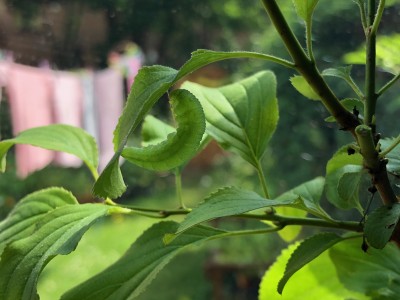
- July 1st 10:48am
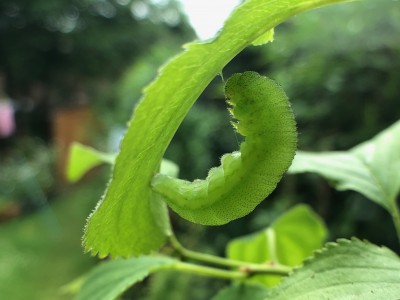
- July 2nd 10:30am
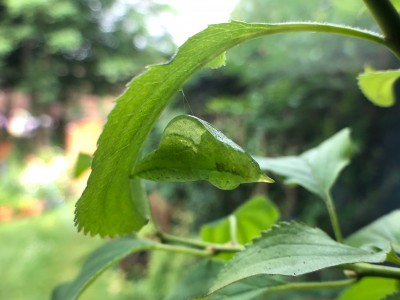
- July 2nd 16:39pm
It was over a day hung upside down under an Alder Buckthorn leaf, before skin change. I was able to set up my iPhone on the time lapse setting to capture some changes. I hope to show those later.
Kind Regards
Re: PhilBWright
Posted: Mon Jul 05, 2021 6:53 pm
by David M
Great observations, Phil.

Must have been fascinating watching it all unfold.
Re: PhilBWright
Posted: Fri Jul 09, 2021 8:42 am
by PhilBJohnson
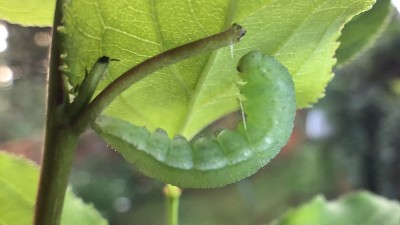
- July 9th 2021 6:36am, mor than 1 day after the Brimstone larva hung itself upside down by silk thread.
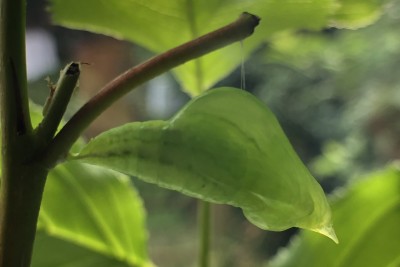
- Brimstone Pupa July 9th 2021 9:18am
Brimstone “out star” (star in pupation).
“The old 5th instar skin,
usually falls off the bottom of the abdomen.
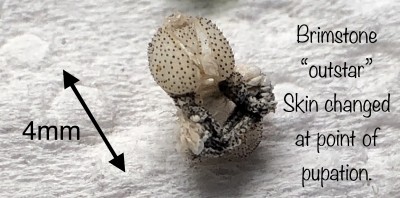
- July 9th 2021
Re: PhilBWright
Posted: Tue Jul 27, 2021 11:15 am
by PhilBJohnson
In Lincolnshire, Garlic Mustard Seed has started ripening.
Collected for sowing immediately or dried then sown in February next year.
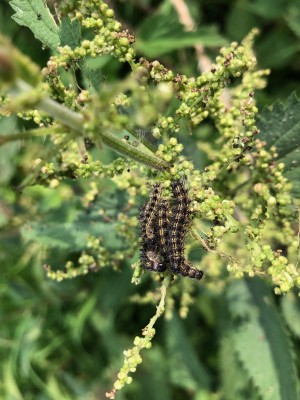
- Second Annual Brood, Small Tortoiseshell Larvae July 25th 2021, Lincolnshire
Youtube link to video I have been working on this month. Small white butterflies and Nasturtiums:
https://youtu.be/S7zNEADtzF4
Kind Regards,
Philip
Re: PhilBWright
Posted: Thu Aug 05, 2021 8:10 pm
by PhilBJohnson
Today I was looking at some Trefoil seed pods and imagining that I could see a birds foot:
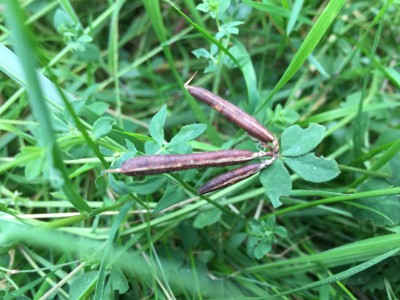
- August 5th 2021 Bird’s foot trefoil seed ready for harvest from some late May flowers
Larval food plant of a Blue butterfly
Meadow brown butterfly
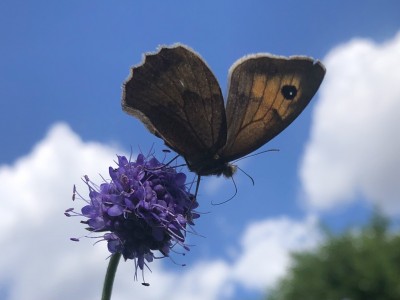
- August 4th 2021 D-bit Scabious flowering now, although not fully out yet
Re: PhilBWright
Posted: Thu Aug 05, 2021 8:57 pm
by Katrina
Lovely unusual angle on the Meadow Browns shot

Re: PhilBWright
Posted: Sun Aug 22, 2021 8:41 am
by PhilBJohnson
If a “grub” escaped “Monty’s” attention, there might not have been a reason for “Monty” to squash a pupa.
Pieris rapae & Curly Kale
Curled leaves helped a caterpillar to comfortably hide and pupate:
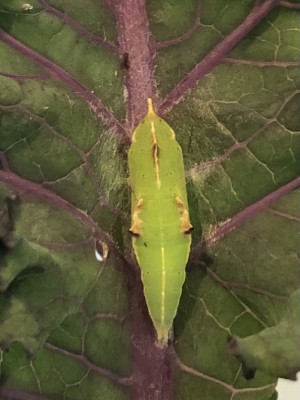
- Pupa found on Curly Kale August 16th 2021
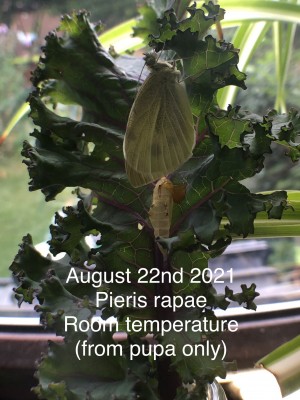
- Emerged from pupa at room temperature.
Pupa was found on a crop outside. Always check your harvest before cooking!
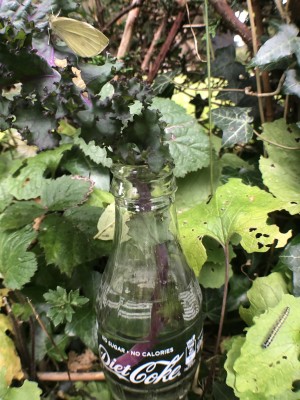
- August 22nd 2021 Glass bottle, acted as a Vase for the Kale leaf, left temporarily outside in a garden, while the butterfly went through it’s pre-flight phase. The hedge provided some shelter for the butterfly's conservation, if it rained.
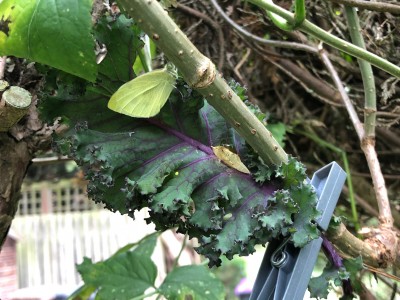
- 11:58am No direct sunlight or rain, in micro locality, yet this morning.
My Diet Coke bottle was rinsed and recycled.
Kind Regards
Re: PhilBWright
Posted: Tue Sep 07, 2021 11:27 pm
by PhilBJohnson
Apparently, not all September pupae will be 2021 butterflies
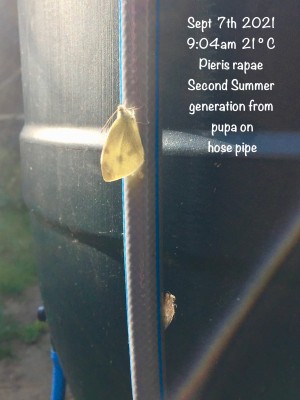
- Backlit closed wing markings and pupal case, suggested it was an unmated female, almost ready for first flight.
Re: PhilBWright
Posted: Tue Sep 14, 2021 12:57 pm
by PhilBJohnson
Ovipositing Speckled wood butterfly & Dead Hedge
The following video clip might be helpful for someone wanting to understand, this species life cycle needs.
Apparently Pararge aegeria can overwinter in more than one form, which was thought to help with generation, flight time overlap (when one was likely to see a Speckled Wood butterfly).
To see something like this (ovipositing butterfly), timing might need to be quite specific, the only "whoops" I had, was in not having my best recording equipment with me at that time.
Hope you enjoy my youtube video clip:
https://youtu.be/o9lVK18wRXo
If someone with expertise can identify for me, the species of native grass used by the butterfly in this above video link, that would help me.
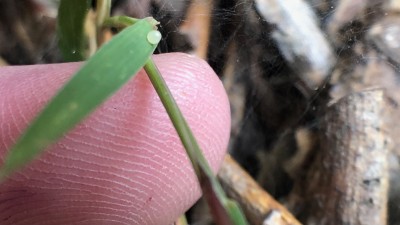
- September 13th 2021
Kind Regards
Re: PhilBWright
Posted: Fri Sep 17, 2021 8:08 pm
by David M
Nice footage, Phil, and you're absolutely right, you can often identify females on an ovipositing mission simply by the way they fly.
I'm no expert on grasses, but isn't your highlighted specimen poa annua? It has the look of 'lawn grass'.
Re: PhilBWright
Posted: Fri Sep 17, 2021 9:28 pm
by Benjamin
Great work with the video Phil!
Re: PhilBWright
Posted: Tue Oct 05, 2021 8:52 am
by PhilBJohnson
Last Cabbage White
As air temperatures drop to “Red Admiral Only” flight times out of direct sunlight (micro-climate) and Garden Spiders get bigger, one might try moving your late sown, Nasturtiums grown from seed immediately, after first summer “wave”,soon to be frost affected) into a south or south east facing sheltered area (possibly under afternoon sunlit porch or bay window).
That might increase the longevity of the nasturtium (if watered) and give something else a chance to make it to pupation.
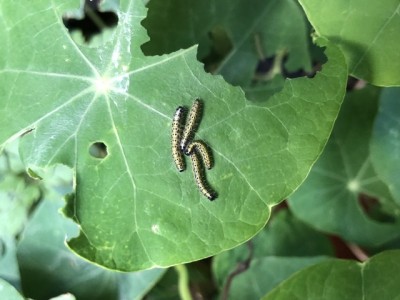
- Pieris brassicae “Last” Large Cabbage White larvae October 3rd 2021, Lincolnshire.
Because of temperature decrease, these might take “ages” to get to pupation and overwinter (like some can).